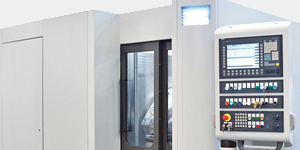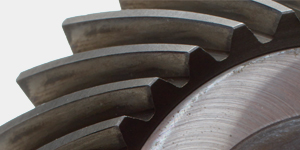Use of nitrogen-methanol endothermic atmospheres
In this column, I will discuss the use of nitrogen-methanol endothermic atmospheres for the heat treatment of steel.
Introduction
When heat treating steels in a typical...
Q&A with Mario Jurcevic
What is your experience and background in the gear industry?
I’ve always been involved in the gear industry since I graduated from college. I started...
Using polymer quenchants in an integral quench furnace
There have recently been several inquiries regarding the use of a polymer quenchant in a sealed or integral quench furnace. There are several drivers...
Heat treatment techniques overview
Editor’s note > This is the fifth in a five-part series.
In this fifth and final installment of my series on heat-treating techniques, I will discuss...
Q&A with Dwight Smith
Before we get into the specifics of the LAMDA500, please explain what powder DED (directed energy deposition) is and why it’s important to metal-based...
Shell Eco-Marathon: The drive for green
Energy plays a critical role in our world. As populations grow and prosper, we are faced with the realization that we must meet the...
What is a spur gear?
What is a spur gear? A spur gear is a type of cylindrical gear with straight teeth that are cut parallel to the axis...
Sinter hardening of PM components
In this column, I will discuss sinter hardening and compare that process to the more traditional heat-treating quench and temper operation.
Introduction
The use of powder...
Q&A with Josh Fairley and Spencer Artz
What sets Norton | Saint-Gobain Abrasives grinding wheels apart from its competition?
Norton | Saint-Gobain’s dedication to continuous research and development of new abrasives and...
Heat treatment techniques overview
Editor’s note > This is the fourth in a five-part series.
In this fourth installment of my series on heat-treating techniques, I will discuss the pros...
Q&A with Scott Richards
What does James Engineering do for the gear-manufacturing industry?
James Engineering manufactures state-of-the-art deburring machines. These machines range from simple manual machines to cutting-edge, high-tech...
Determining concentration and required amounts
In this column, I will discuss how to calculate the required amounts of quenchant in a quench tank. This method is also applicable to...
Q&A with Aaron Jones
How are you involved with Opus IVS, and what does it mean for the EV market?
IVS is our diagnostic support side of the company....
NMTP – Pearlite and ferrite
In this column, we will discuss the non-martensitic transformation products of pearlite and bainite.
Introduction
Pearlite was named by Henry Howe for the pearly phase constituent...
Heat treatment techniques overview
Editor’s note > This is the third in a five-part series.
In this third segment of my series on heat-treating techniques, I will discuss the pros...
What gears should I use in my gearbox?
Although designed to transmit torque and power between rotating shafts, the choices for gearing when designing a gearbox are determined primarily by the orientation...
Q&A with Karen Young
You’re celebrating your 50th year in business in 2023. How did it all begin?
It all began in February of 1973, when my husband, Rusty...
Perspectives on helical gearing
Perspective is a particular attitude regarding your point of view on a subject. In most cases, the perspective through which you view a subject...
Non-martensitic transformation products: Bainite
In this column, I will discuss the non-martensitic transformation product called bainite.
Introduction
The decomposition of austenite, when occurring at a fast enough rate to exceed...
An overview of heat treatment techniques
Editor’s note > This is the second in a five-part series.
In this second segment of my series on heat-treating techniques, I will discuss the...



























